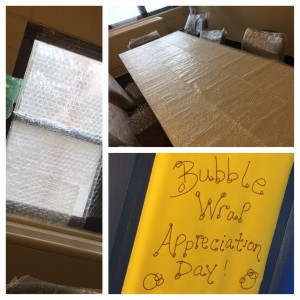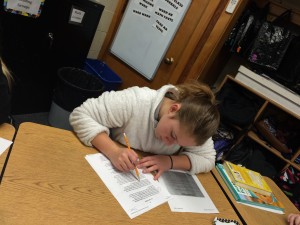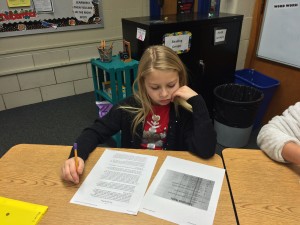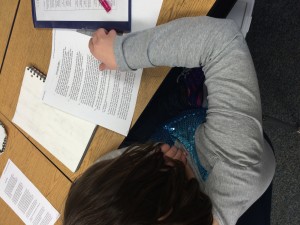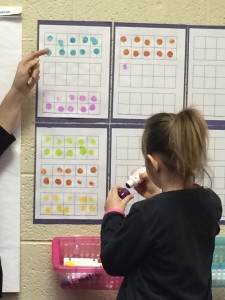Technology Class Updates
| The technology lab at DGS if full of action and buzz. Students come to the lab each week for various instruction on key technology concepts. Mrs. Andrews develops lessons and activities that support learning in the classroom as well as develop students that are technology capable producers. Read on to find out how each grade level is progressing this year!
Kindergarten spent most of first semester learning how to use a computer mouse, opening and closing programs, and identifying the different parts of the computer. Now that they are aware of how a computer works they are focusing on navigating their way around the keyboard with a program called Read, Write, & Type.
|
| 1st Grade spent first semester working in a program called Read, Write, & Type which helped them learn where the letters of the alphabet were located on the keyboard along with how to use Shift, period, and Enter. This semester they are working in a program called KidPix where they are learning how to use different drawing tools to create pictures.
|
| 2nd grade spent the first part of the year working in a program called Type to Learn 4 which helped them to practice typing while playing fun, challenging games. This program focused a lot on which hand and fingers they should use for each key on the keyboard. They then moved on to their research project where they had to use a website called Enchanted Learning to find information about the planets. Once they did their research they organized their data in a graphic organizer in a program called Kidspiration2. Finally, the kids are using their data about the planet they choose to create an original story about what they would do on their planet if they lived there. Not only are they writing stories, but they are illustrating as well in a program called Storybook Weaver. From playing space tag in their space ships to swimming with alien dolphins, these stories are really coming to life!
|
| Third grade spent the entire first semester working on their typing skills. We began the year learning about proper keyboarding posture, the home row keys and where our fingers rest when we are not using them, and which fingers are used to hit the different keys. Lately we have been using a program called Type to Learn 3 which allows the kids to use their keyboarding knowledge to play fun games. After taking a quick break to familiarize ourselves with the PARCC assessment, we are now ready to begin a research project about the 50 states, and we will use our research to create PowerPoint presentations to share with our classmates!
|
| Fourth grade began the year refreshing their keyboarding skills in a program called Type to Learn 4. It was a rough start as most seem to have lost their keyboarding skills over summer break! They then moved into a research project in which they researched information about the rainforest. We took a quick break from the fun stuff to familiarize ourselves with the PARCC assessment so that fourth grade had a good idea of what they were doing prior to the tests in March. Finally, the students learned how to use a program called PhotoStory in which they used the biographies they wrote in class as their story, downloaded photos from the internet, and put them together to make a beautiful mini-movie. They will finish these up next week and then we will share them with the whole class!
|
| Fifth grade began the year refreshing their keyboarding skills in a program called Type to Learn 4. Just like the fourth graders, 5th grade seemed to have lost their keyboarding skills during summer break, so the refresher was definitely needed! Next they did some research on their Civil War person they were assigned by their classroom teachers. They used their research to create PowerPoint presentations in which they needed to have five informational slides informing their classmates about the role their person played in the war. We took a brief break to familiarize ourselves with the PARCC assessment which is coming up in March, and rewarded ourselves afterwards by presenting our presentations to the class. The students truly did a fabulous job with this project!
|

